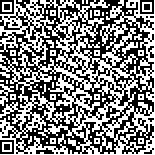| 摘要: |
| [摘要] 目的 分析气道压力释放通气(APRV)和小潮气量通气(LTV)对急性呼吸窘迫综合征(ARDS)炎症的影响,探讨不同机械通气模式对ARDS机械应力相关的作用及机制。方法 构建巴马小型成年猪重度ARDS模型,应用LTV与APRV通气模式,进行48 h机械通气治疗,分为空白对照组(control组,n=3)、疾病对照组(ARDS组,n=3)、LTV机械通气组(LTV组,n=4)以及APRV机械通气组(APRV组,n=4)。观察两种通气模式对氧合指数、炎症因子的影响。对肺组织进行高通量测序,并在蛋白层面验证差异基因ITGB4对ARDS机械通气后炎症的影响。使用A549细胞系构建APRV样牵张模型及LTV样牵张模型,进行4 h体外牵张实验,探讨两种牵张模式通过ITGB4对细胞炎症因子分泌的影响。使用小干扰RNA(siRNA)沉默ITGB4表达,比较LTV+siRNA组与APRV+siRNA组ITGB4-FAK-p38-MAPK-IL-8通路表达差异。使用p38抑制剂(SB203580)对细胞进行干预,比较LTV+SB203580组和APRV+SB203580组IL-8表达水平的差异。结果 重度ARDS造模成功后,通气48 h,APRV组肺泡灌洗液及肺组织中IL-6、IL-8水平显著低于LTV组(P<0.05),而两组IL-1、TNF-α差异无统计学意义(P>0.05)。转录组高通量测序结果显示,机械通气后细胞外基质受体交互通路及黏着斑信号通路显著富集。在肺组织中,APRV组ITGB4、p-FAK、p-p38蛋白表达水平显著低于LTV组(P<0.05)。细胞牵张模型在体外细胞中复现LTV与APRV样牵张,周期性牵张4 h使细胞IL-8水平显著升高(P<0.05),IL-6水平无明显变化(P>0.05)。APRV组的IL-8、ITGB4、p-FAK和p-p38表达水平显著低于LTV组(P<0.05)。沉默ITGB4可以显著下调机械牵张后APRV组与LTV组p-FAK、p-p38的表达水平,APRV+siRNA组下调趋势明显,但相较LTV+siRNA组差异无统计学意义(P>0.05)。使用p38抑制剂后,相较于LTV+SB203580组,APRV+SB203580组p-p38磷酸化水平显著下调(P=0.032)。结论 APRV机械通气模式通过ITGB4-p38-MAPK通路显著改善重度ARDS后炎症因子IL-8的分泌,可能为ARDS治疗提供潜在的干预靶点。 |
| 关键词: 急性呼吸窘迫综合征 机械通气 气道压力释放通气 小潮气量通气 整合素4 炎症 |
| DOI:10.3969/j.issn.1674-3806.2024.02.02 |
| 分类号:R 563.8 |
| 基金项目:国家自然科学基金面上项目(编号:81873929) |
|
| A study on the mechanism of airway pressure release ventilation in reducing ARDS pulmonary inflammation by regulating ITGB4-related pathways |
|
MA Aijia1, WEI Canzheng1,2*, DONG Meiling1, CHENG Jiangli1, Haiyier Buick Adali1, QIN Yiwei1,3, XUE Yang1, GAO Hui1, ZHAO Lican1, LI Jianbo1, ZHOU Yongfang1, WANG Bo1, YANG Jing1#, KANG Yan1,4
|
|
1.Department of Critical Care Medicine, West China Hospital of Sichuan University, Chengdu 610041, China; 2.Department of Critical Care Medicine, the Second Affiliated Hospital of Shandong First Medical University, Taian 271000, China; 3.Department of Critical Care Medicine, the First Affiliated Hospital of Chengdu Medical College, Sichuan 610041, China; 4.West China Tianfu Hospital, Sichuan University, Chengdu 610200, China; *Co-first author; #Co-corresponding author
|
| Abstract: |
| [Abstract] Objective To analyze the effects of airway pressure release ventilation(APRV) and low tidal volume ventilation(LTV) on inflammation in acute respiratory distress syndrome(ARDS), and to explore the effects and mechanisms of different mechanical ventilation modes on the related mechanical stress in ARDS. Methods An adult Bama miniature pig model of severe ARDS was constructed, and LTV and APRV ventilation modes were applied for mechanical ventilation treatment for 48 hours. The model pigs were divided into blank control group(control group, n=3), disease control group(ARDS group, n=3), LTV mechanical ventilation group(LTV group, n=4) and APRV mechanical ventilation group(APRV group, n=4). The effects of the two ventilation modes on oxygenation index and inflammatory factors were observed. High-throughput sequencing was performed on lung tissues, and the effects of the differential gene integrin beta 4(ITGB4) on inflammation after mechanical ventilation for ARDS were verified at the protein level. The APRV-like stretching model and the LTV-like stretching model were constructed by using the A549 cell line, and 4-hour stretch test was performed in vitro. The effects of the two stretching modes on the secretion of inflammatory cytokines were explored by ITGB4. Small interfering ribonucleic acid(RNA)(siRNA) was used for silencing the expression of ITGB4, and the differences in the expression of the ITGB4-focal adhesion kinase(FAK)-p38-mitogen-activated protein kinase(MAPK)-interleukin-8(IL-8)(ITGB4-FAK-p38-MAPK-IL-8) pathway was compared between the LTV+siRNA group and the APRV+siRNA group. The p38 inhibitor of SB203580 was used to intervene the cells, and the difference in the level of IL-8 expression was compared between the LTV+SB203580 group and the APRV+SB203580 group. Results After successful modeling of severe ARDS and 48-hour ventilation, the levels of IL-6 and IL-8 in the alveolar lavage fluid and lung tissues in the APRV group were significantly lower than those in the LTV group(P<0.05). However, there were no statistically significant differences in IL-1 and tumor necrosis factor-α(TNF-α) between the two groups(P>0.05). The results of high-throughput sequencing in transcriptome showed the significant enrichment of extracellular matrix(ECM)-receptor interaction pathway and focal adhesion signaling pathway after mechanical ventilation. In the lung tissues, the levels of ITGB4, p-FAK, p-p38 protein expressions in the APRV group were significantly lower than those in the LTV group(P<0.05). In the cell stretching model, LTV and APRV-like stretches were repeated in vitro cells, and cyclic stretching for 4 hours resulted in a significant increase in cellular IL-8 levels(P<0.05), but did not significantly change the level of IL-6(P>0.05). The levels of IL-8, ITGB4, p-FAK and p-p38 expressions in the APRV group were significantly lower than those in the LTV group(P<0.05). Silencing ITGB4 could significantly down-regulate the levels of p-FAK and p-p38 expressions in the APRV group and the LTV group after mechanical stretching, and the down-regulation trend was obvious in the APRV+siRNA group, but there were no statistically significant differences in the down-regulations between the APRV+siRNA group and the LTV+siRNA group(P>0.05). After the use of p38 inhibitor, the level of p-p38 phosphorylation in the APRV+SB203580 group was significantly down-regulated compared with that in the LTV+SB203580 group(P=0.032). Conclusion APRV mechanical ventilation mode significantly improves the secretion of inflammatory factor IL-8 after severe ARDS through the ITGB4-p38-MAPK pathway, which may provide a potential intervention target for the treatment of ARDS. |
Key words: Acute respiratory distress syndrome(ARDS) Mechanical ventilation Airway pressure release ventilation(APRV) Low tidal volume ventilation(LTV) Integrin 4 Inflammation
*共同第一作者 #共同通信作者 |

